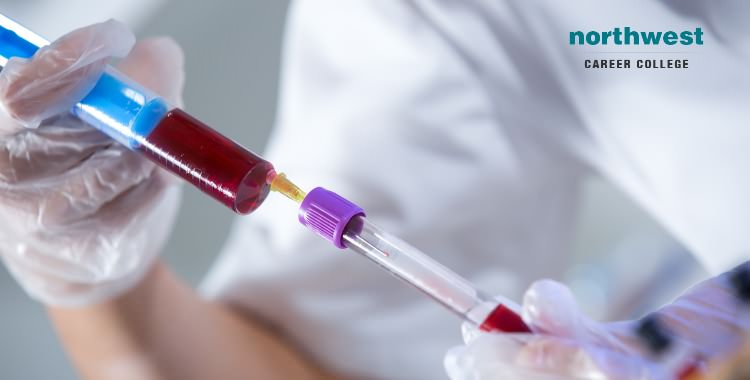Getting My Northeast Medical Institute - New Haven Campus Phlebotomy Course & Cna Class To Work
Getting My Northeast Medical Institute - New Haven Campus Phlebotomy Course & Cna Class To Work
Blog Article
How Northeast Medical Institute - New Haven Campus Phlebotomy Course & Cna Class can Save You Time, Stress, and Money.
Table of ContentsNot known Factual Statements About Northeast Medical Institute - New Haven Campus Phlebotomy Course & Cna Class The Ultimate Guide To Northeast Medical Institute - New Haven Campus Phlebotomy Course & Cna ClassThe Ultimate Guide To Northeast Medical Institute - New Haven Campus Phlebotomy Course & Cna ClassUnknown Facts About Northeast Medical Institute - New Haven Campus Phlebotomy Course & Cna Class4 Easy Facts About Northeast Medical Institute - New Haven Campus Phlebotomy Course & Cna Class Explained8 Simple Techniques For Northeast Medical Institute - New Haven Campus Phlebotomy Course & Cna Class
The usage of such gadgets should be accompanied by other infection avoidance and control practices, and training in their usage.For setups with reduced resources, cost is a driving element in procurement of safety-engineered devices - CNA Courses. Where safety-engineered tools are not offered, knowledgeable use of a needle and syringe is acceptable. Accidental direct exposure and specific information concerning an occurrence ought to be videotaped in a register. Support services should be promoted for those who undertake unintentional direct exposure.
In the blood-sampling area for an outpatient division or center, provide a comfy reclining sofa with an arm rest.
Some Known Facts About Northeast Medical Institute - New Haven Campus Phlebotomy Course & Cna Class.
Guarantee that the signs for blood tasting are clearly defined, either in a written procedure or in documented guidelines (e.g. in a research laboratory kind). In any way times, adhere to the approaches for infection avoidance and control listed in Table 2.2. Infection avoidance and control methods. Collect all the tools needed for the treatment and location it within secure and simple reach on a tray or cart, making sure that all the things are plainly noticeable.
Introduce yourself to the patient, and ask the individual to state their full name. Check that the lab type matches the client's identity (i.e. match the client's details with the laboratory type, to make sure precise recognition).
Make the client comfortable in a supine position (if feasible). The client has a right to reject an examination at any kind of time before the blood sampling, so it is crucial to make certain that the client has actually understood the treatment - PCT Classes.
The 10-Second Trick For Northeast Medical Institute - New Haven Campus Phlebotomy Course & Cna Class
Prolong the client's arm and inspect the antecubital fossa or forearm. Find a blood vessel of a great dimension that shows up, straight and clear. The diagram in Area 2.3, reveals typical placements of the vessels, however several variations are feasible. The average cubital blood vessel lies between muscle mass and is generally the most easy to penetrate.
DO NOT place the needle where veins are diverting, because this raises the possibility of a haematoma. The blood vessel needs to show up without applying the tourniquet. Locating the blood vessel will help in establishing the correct dimension of needle. Use check my site the tourniquet concerning 45 finger widths above the venepuncture site and re-examine the capillary.
Haemolysis, contamination and existence of intravenous fluid and medicine can all change the results (39. Nursing staff and physicians may access central venous lines for specimens following methods. Specimens from main lines carry a threat of contamination or incorrect laboratory examination results. It is appropriate, however not suitable, to draw blood specimens when initial presenting an in-dwelling venous gadget, prior to linking the cannula to the intravenous fluids.
Some Known Factual Statements About Northeast Medical Institute - New Haven Campus Phlebotomy Course & Cna Class
Enable the location to dry. Failing to allow adequate contact time raises the risk of contamination. DO NOT touch the cleaned site; particularly, DO NOT place a finger over the vein to guide the shaft of the subjected needle. It the website is touched, repeat the sanitation. Carry out venepuncture as complies with.
Ask the individual to develop a clenched fist so the veins are much more popular. Go into the vein promptly at a 30 degree angle or less, and remain to present the needle along the capillary at the simplest angle of entry - CNA Training. Once sufficient blood has actually been accumulated, launch the tourniquet prior to taking out the needle
Northeast Medical Institute - New Haven Campus Phlebotomy Course & Cna Class Can Be Fun For Anyone
Withdraw the needle delicately and use gentle pressure to the website with a clean gauze or completely dry cotton-wool sphere. Ask the person to hold the gauze or cotton wool in area, with the arm prolonged and increased. Ask the patient NOT to bend the arm, due to the fact that doing so creates a haematoma.
:max_bytes(150000):strip_icc()/Primary_Image-b2e24c37575f48279cff673865d3853c.jpg)
The Only Guide to Northeast Medical Institute - New Haven Campus Phlebotomy Course & Cna Class
Where possible, maintain the tubes in a rack and move the rack towards you - https://www.4shared.com/u/c2pfSlvK/gordonmarvin28.html. If the example tube does not have a rubber stopper, inject incredibly gradually into the tube as reducing the stress and speed utilized to move the sampling decreases the threat of haemolysis.

Report this page